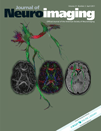Giant Tumefactive Perivascular Spaces Manifesting as Chorea Bilaterally
Conflict of Interest: None
J Neuroimaging 2011;21:205-207.
ABSTRACT
Virchow-Robin (VR) spaces or perivascular spaces (PVSs) of the brain are pial-lined interstitial fluid-filled structures that accompany penetrating arteries and arterioles for a variable distance as they descend into the cerebral substance. VR spaces can be identified on magnetic resonance (MR) images obtained in patients of all ages in many areas of the brain. Infrequently, these become remarkably enlarged, and can assume configurations that may be mistaken for a more clinically significant disease, such as a cystic neoplasm or parasitic infections like cysticercosis. We report the first MR imaging description of a case of giant tumefactive (PVSs) manifesting as chorea bilaterally.




